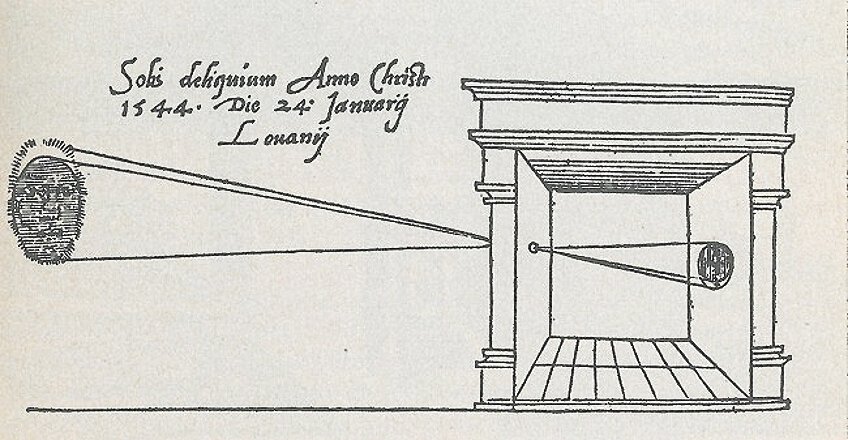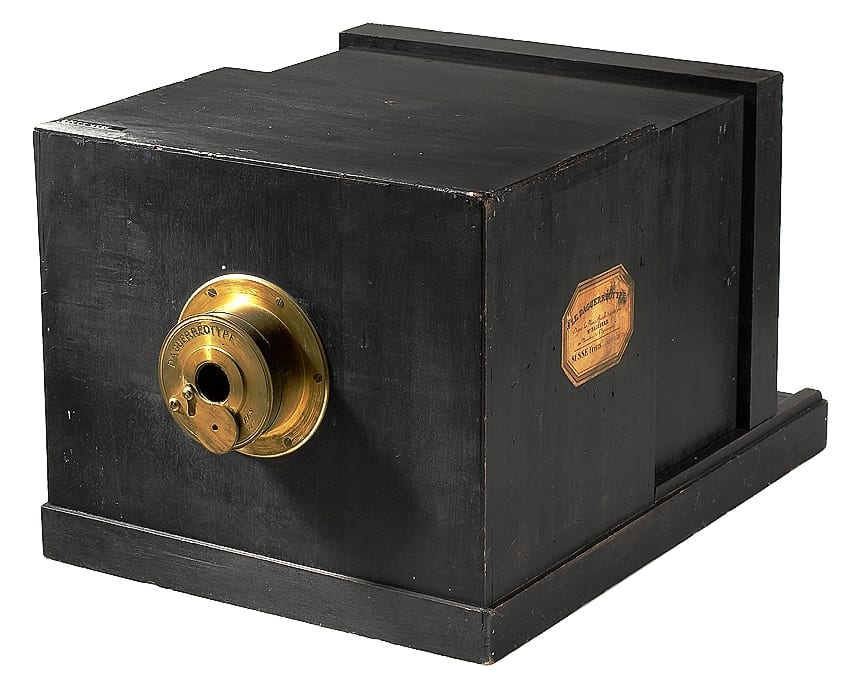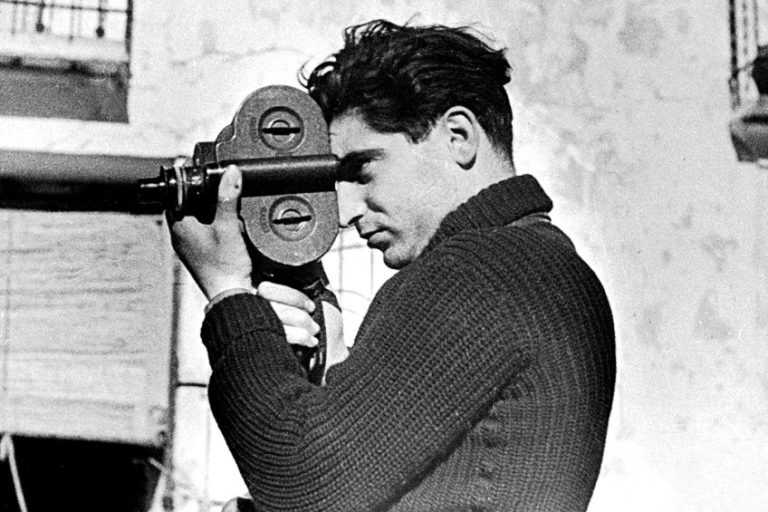Who Invented the Camera? – Capturing History
The invention of the camera marks a pivotal moment in the history of photography and visual documentation. While the modern camera as we know it today has evolved through centuries of innovation, its origins can be traced back to ancient optical devices like the camera obscura. This article delves into the fascinating journey of how the camera evolved from its early conceptualization to the sophisticated digital and film cameras of the present day. Exploring the contributions of key inventors and technological advancements, we uncover the rich tapestry of ingenuity that has shaped the art and science of photography.
Table of Contents
Key Takeaways
- The camera evolved from the camera obscura, known for millennia, to capture images from light.
- Contributions by inventors like Niépce, Daguerre, and Talbot were instrumental in developing photography.
- The Kodak camera marked a significant shift by making photography accessible to the public.
The Origins of the Camera
The invention of the camera represents a pivotal advancement in human history, enabling us to capture moments in time with precision and clarity. The origins of the camera can be traced back to the camera obscura, an ancient device that projected images from an external scene through a small hole in a darkened room. The foundational principle of the camera obscura has been known for over 2,000 years, with references by figures such as Aristotle and the enhancements by Renaissance scientists.

While the camera obscura laid the groundwork, it was not until the 19th century that significant progress was made towards the development of the camera as we know it. Several inventors contributed to the evolution of photographic technology during this time. Joseph Nicéphore Niépce created the very first permanent photograph using a camera he devised, while Louis Daguerre and William Henry Fox Talbot made further critical contributions in developing different photographic processes.
The breakthrough came in the form of George Eastman’s Kodak camera which, alongside advances in film technology, revolutionized the accessibility and practicality of photography for the general population.
Early Concepts and Camera Obscura
The camera obscura (Latin for “dark chamber”) was a principal optical concept that laid the foundation for photography and the invention of the camera. Dating back to ancient times, the concept was utilized by both Aristotle and the Chinese philosopher Mozi. Mozi’s writings in the 5th century BCE described the camera obscura as a “collecting place” or “locked treasure room” that demonstrated the principles of inverted and reversed images formed through a pinhole.

By the 10th century, the camera obscura’s scientific principles were further explored by Ibn al-Haytham, an Arab mathematician who detailed the principles of optics in his Book of Optics. Moving into the Renaissance period, polymaths like Leonardo da Vinci used the camera obscura for detailed observational drawing and painting.
The refinement of the device continued into the 17th century with the ideas of Johann Zahn, but it wasn’t until the 19th century that these concepts would be merged with emerging chemical processes to create permanent images.
The Heliograph and Its Inventors
The advent of permanent photographic images began with the technique of heliography, a process developed by Nicéphore Niépce in the 1820s. Heliography, from the Greek words ‘helios’ (sun) and ‘graphein’ (writing), was a process that used bitumen-coated plates and sunlight to create the first permanent photographs. These photographs required extremely long exposure times, counted in hours rather than minutes or seconds.

Niépce’s pivotal contribution is often considered the starting point of practical photography. His success marked a transition from the theoretical and observational usage of the camera obscura to a means of permanent image capture, effectively giving birth to the modern camera.
His heliograph, View from the Window at Le Gras, is the earliest surviving photograph from nature and stands as a milestone in the history of the camera.
Inventors of the First Camera
The journey of the camera’s invention is credited to a few innovative individuals who played pivotal roles in the early days of photography.
Nicéphore Niépce
He is often recognized as the creator of the first successful permanent photograph. Niépce used a camera obscura as well as a process he invented called heliography to capture an image. He succeeded in making the first photograph on a pewter plate coated with bitumen of Judea in 1816, which hardened in response to light.

Louis Daguerre
Working initially with Niépce, and then alone after Niépce’s death, Daguerre developed a more effective method of photography. His process, called the Daguerreotype, captured images onto a silver-coated copper plate.
This new process, considerably faster than Niépce’s heliography, was first announced to the public in 1839.
William Henry Fox Talbot
Around the same time as Daguerre, Talbot developed a process on his own, called calotype or Talbotype, which created negative images on paper coated with silver chloride. This technique, which he invented in the early 1830s, made it possible to reproduce positive images and is considered a foundational process of modern photography.

Advancements in Photographic Technology
This section explores the transformative stages of photographic technology, focusing on the pivotal developments from the early Daguerreotype process to the advent of the modern film camera. The advancements discussed propelled photography from a novel invention to a widely accessible medium.
The Daguerreotype Process
The dawn of practical photography began in 1839 with the announcement of the Daguerreotype process, developed by Louis Daguerre in collaboration with Joseph Nicéphore Niépce. This process involved capturing an image directly onto a silver-coated copper plate, which was then exposed to silver nitrate, creating a detailed and sharp image. Daguerreotypes were distinct for their clarity but required long exposure times and produced a unique image that couldn’t be replicated.

From Calotype to the Modern Film Camera
Soon after Daguerre’s invention, in 1841, Henry Fox Talbot patented the Calotype process. It differed significantly as it used paper coated with silver salts, allowing for shorter exposure times and the ability to create multiple copies from a single negative. This critical development laid the foundation for the modern practice of film-based photography. In the late 19th century, George Eastman revolutionized photography by introducing flexible photographic film.
Eastman’s Kodak Company made photography accessible to the masses with the slogan, “You press the button, we do the rest.”
The development of roll film cameras and specifically the 35 mm film standard created a new era of convenience and portability that would dominate the industry for more than a century. Through these advancements, the camera evolved significantly, becoming more user-friendly and paving the way for the myriad photographic technologies used today.
The Digital Revolution
The digital revolution in photography marked a significant transition from analog to digital technologies, fundamentally altering how photographs are captured, stored, and shared.

The Advent of Digital Cameras
In 1975, an engineer named Steven Sasson who worked for Eastman Kodak created the first digital camera prototype. Weighing 8 pounds, this early digital camera had a resolution of just 0.01 megapixels, but it laid the foundation for modern digital photography. By 1986, Kodak had developed the world’s first megapixel sensor, which could record 1.4 million pixels and produce a 5×7-inch digital photo-quality print.
Such developments drove the digital camera revolution, as cameras transitioned from recording images on film to doing so electronically, on digital sensors.
Smartphones and Photography Today
The introduction of camera phones marked the next essential milestone in photography’s evolution. The first smartphone with a built-in camera was released in 2000, and since then, the integration of cameras into mobile phones has dramatically influenced the way people capture and consume images.

Modern smartphones now feature multi-lens camera systems capable of capturing high-resolution images and videos, reinforcing their role as the portable camera obscuras of our time. The rise of social media platforms has paralleled the proliferation of camera phones, fostering an environment where photography is instantaneously shared and consumed globally, shaping not just modern photography, but contemporary culture as well.
The history of the camera’s invention is a testament to human curiosity, creativity, and technological progress. From the humble beginnings of the camera obscura to the groundbreaking innovations of pioneers like Joseph Nicéphore Niépce, George Eastman, and many others, each step forward has expanded the possibilities of visual storytelling and artistic expression. As we continue to witness advancements in digital imaging and photography, it’s important to reflect on the remarkable journey that started with the invention of the camera—an invention that has profoundly influenced how we capture and perceive the world around us.
Frequently Asked Questions
Who Is Credited With Inventing the First Photographic Camera?
Joseph Nicéphore Niépce is recognized for creating the earliest surviving photograph in the 1820s using a camera. His work marked the beginning of practical photography.
What Is the History Behind the Invention of the Camera Obscura?
The concept of the camera obscura, a precursor to the photographic camera, can be traced back to ancient China and the writings of Mozi in the 4th century B.C.E. It was later detailed by the Iraqi scientist Ibn al-Haytham in his Book of Optics during the 11th century. Portable versions emerged in the 17th century.
Which Individual Took the Very First Photograph Using a Camera?
Joseph Nicéphore Niépce is also credited with taking the first photograph, titled “View from the Window at Le Gras,” using his heliography process in the 1820s.
Isabella studied at the University of Cape Town in South Africa and graduated with a Bachelor of Arts majoring in English Literature & Language and Psychology. Throughout her undergraduate years, she took Art History as an additional subject and absolutely loved it. Building on from her art history knowledge that began in high school, art has always been a particular area of fascination for her. From learning about artworks previously unknown to her, or sharpening her existing understanding of specific works, the ability to continue learning within this interesting sphere excites her greatly.
Her focal points of interest in art history encompass profiling specific artists and art movements, as it is these areas where she is able to really dig deep into the rich narrative of the art world. Additionally, she particularly enjoys exploring the different artistic styles of the 20th century, as well as the important impact that female artists have had on the development of art history.
Learn more about Isabella Meyer and the Art in Context Team.
Cite this Article
Isabella, Meyer, “Who Invented the Camera? – Capturing History.” Art in Context. April 10, 2024. URL: https://artincontext.org/who-invented-the-camera/
Meyer, I. (2024, 10 April). Who Invented the Camera? – Capturing History. Art in Context. https://artincontext.org/who-invented-the-camera/
Meyer, Isabella. “Who Invented the Camera? – Capturing History.” Art in Context, April 10, 2024. https://artincontext.org/who-invented-the-camera/.









